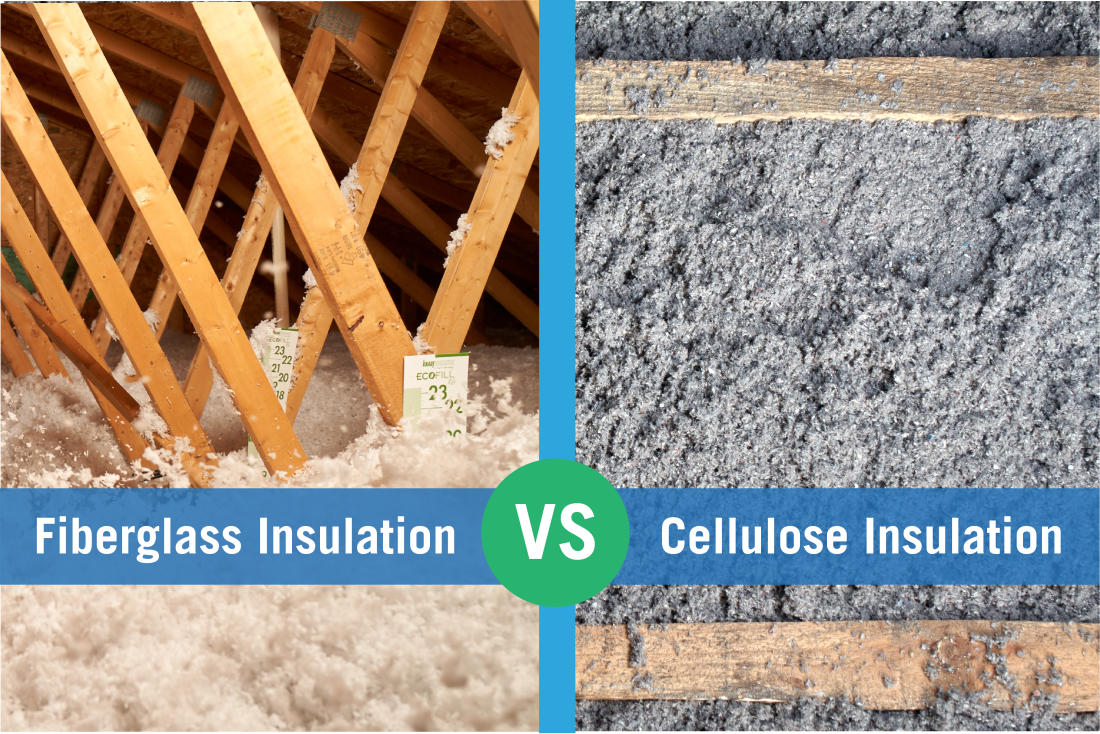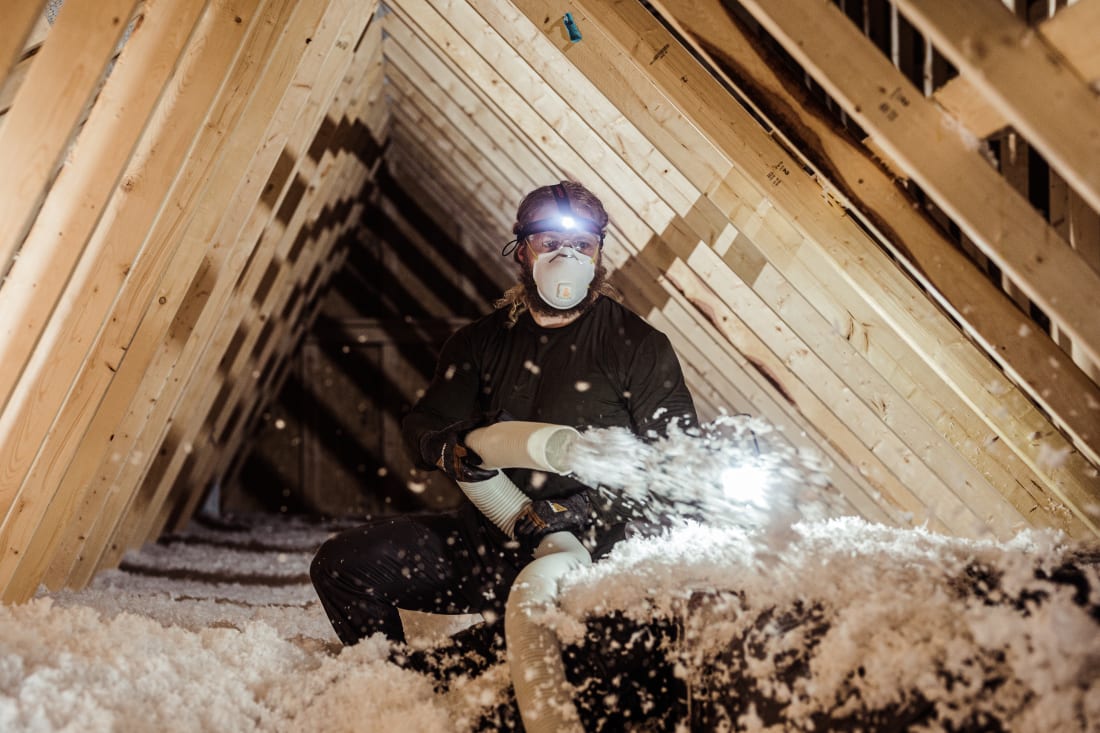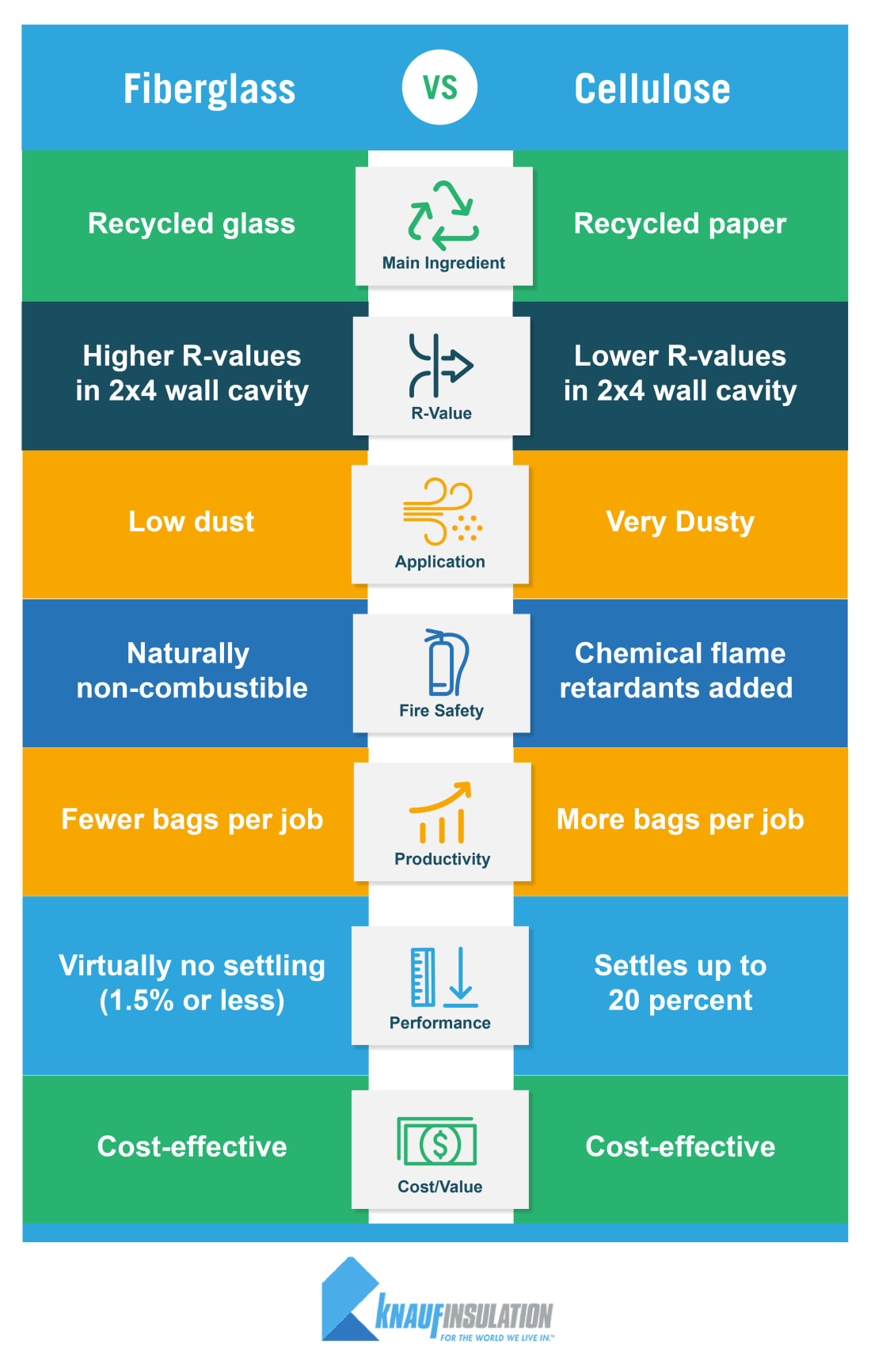Cellulose vs Fiberglass Insulation: Which is Best?

09/13/2021
When considering insulation for a new home or remodel, one of your first decisions is likely “what material should I use?” Two of the most common types of home insulation available today are fiberglass and cellulose. It’s important to know the differences between cellulose vs. fiberglass insulation — including ease of application, thermal performance, and value— to determine which insulation material is right for your project.
Let's get to the facts, so you can make an informed choice.
What is Fiberglass Insulation?

Fiberglass insulation is recycled glass and other rapidly renewable raw materials which are melted and spun into fibers. Fiberglass insulation comes in batts and rolls, or blown-in insulation, sometimes referred to as loose fill or blowing wool.
What is Cellulose Insulation?

Cellulose is an insulation primarily made of ground-up recycled newspaper. Cellulose is almost always in blown-in form, used in attic cavities or “drill and fill” in existing sidewalls. Cellulose can also be wet-applied.
Thermal Performance / R-Value

R-value is the resistance to heat flow. The higher the R-value, the greater the insulating power. Fiberglass insulation can achieve higher R-values than cellulose in the same wall cavity. This is because fiberglass insulation can be engineered to have more, finer fibers in the product, which results in excellent thermal performance.
Blown-in fiberglass insulation can achieve an R-15 in a 2x4 side wall. Compare that to cellulose which can provide a maximum R-value of only R-13 in 2x4 construction.
Which Insulation is Easier to Install?
Because cellulose is made using shredded newspaper, it can be substantially dustier.
Fiberglass insulation’s tightly spun fibers make it far less dusty than cellulose, making it cleaner and easier to install. Fiberglass batts and rolls can also be installed without the use of a blowing machine, which requires two installers to feed and operate.
Differences in Fire Safety
Fiberglass insulation is naturally noncombustible because it is made of recycled glass and sand. It requires no additional fire-retardant chemicals. Blown in fiberglass insulation, as well as unfaced fiberglass insulation batts, are non-combustible per ASTM E136 and can be used where noncombustible insulation is required. Many fiberglass insulation products manufactured by Knauf Insulation have surface burning characteristics of a flame spread index of 25 or less and a smoke developed index of 50 or less, which meets all national building and mechanical codes for insulation.
Cellulose insulation is made of paper products which are naturally combustible. To protect against fire hazards, cellulose insulation is heavily treated with fire retardant chemicals. These chemicals, such as boric acid and sulfates, can leach out of the insulation and create health and safety problems over time. An average 1,200 square foot attic insulated to R-38 with cellulose insulation would introduce 300 pounds of fire-retardant chemicals into the home.
On the Job
Fiberglass insulation is packed under compression allowing manufacturers to pack more product into the bags. This minimizes the space required in warehouses and trucks compared to cellulose. Installers can spend less time installing as it requires fewer bags— which can make the job more efficient.
Knauf blown-in insulation requires 56 percent fewer bags of material vs. cellulose. In a standard size attic, that is the difference between 28 bags of Knauf Jet Stream (R-49) and 76 bags of cellulose (R-49). Download this guide to see how Knauf Jet Sream Ultra compares to Cellulose for walls and attics.
Long-term Performance of Cellulose vs. Fiberglass Insulation
Properly-installed fiberglass insulation has virtually no settling or loss of thickness (1.5% or less) and maintains its thermal performance for the life of the building.
Cellulose manufacturers agree that their products settle over time. Most set the settling rate at about 20 percent in open attics. Therefore, always consult the “minimum settled thickness” and the “initial installed thickness” listed on the cellulose manufacturer’s coverage chart, required by the FTC, to ensure future settling is accounted for.
What is the Price Difference Between Cellulose and Fiberglass?
Both fiberglass and cellulose are typically the least expensive insulation materials available. They are similar in price, both costing around $0.70 to $0.80 per square foot for 6 inches of insulation.
Side-By-Side Comparison

The Best Blown In Insulation Choice
With its ease of installation, flexibility and effective performance, it’s no wonder fiberglass insulation is the choice in 85 percent of American homes.
Sources
http://insulationinstitute.org/wp-content/uploads/2016/01/BI475.pdfhttps://www.fixr.com/comparisons/cellulose-vs-fiberglass-insulation
